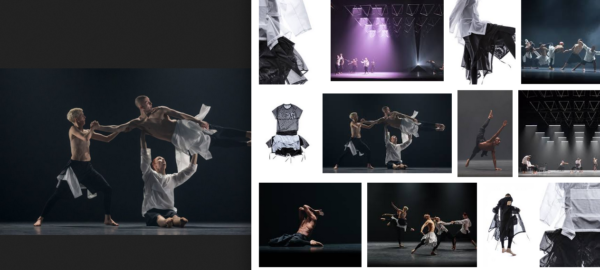For the most recent essay for our MA course, I researched the history of the Jewish garment industry in London, particularly during the interwar period. My interest in this topic began when Rebecca mentioned an exhibition called Broken Threads, staged in Vancouver in 2007, that explored the decimation of the Jewish fashion and textile industries in Germany and Austria during the Nazi regime. Despite knowing that Jewish people had a long history as tailors and clothing merchants, and that a huge part of the Nazi agenda was to destroy Jewish businesses, I had never connected the dots. I realized that I had stumbled across an enormous legacy throughout Europe and America that is often forgotten, and contemporary scholarship is just beginning to study it.
As my research continued, Rebecca suggested I focus specifically on the case of London so I could access collections and archives in the city. Eventually, my final paper focused predominantly on the menswear retailer Montague Burton, a Russian Jewish immigrant who dominated his sector, owning 600 shops by 1939 all over the United Kingdom. A key component of his success was that he was able to rely on the ethnic economic niche of Eastern European Jews working in the tailoring industry. They provided both a community into which he could enter upon arriving in England, and, later, a workforce to employ in his enormous Leeds factory.

Burton was not unique in his reliance on the Jewish community for his entrepreneurial success. Morris Cohen, a lesser-known figure in this history, is regarded as the grandfather of London’s Jewish garment industry, as explained by Anne Kershen. His name has now effectively faded into oblivion, but his contributions have long outlived him and deserve recognition. He was an Eastern European Jewish immigrant who began in London as a gentlemen’s tailor, but eventually moved over to the women’s ready-to-wear sector, capitalizing on an enormous growth industry as women were becoming more economically active and independent in the 1920s and 1930s. Kershen describes Cohen as opportunistic and entrepreneurial as he built a mantle manufacturing factory using expertise working as a tailor for the Russian Court. Eventually, through his success in this area, he was able to employ many of his friends and neighbors in his community. He was very successful in this business, but his most significant contribution was in planting the seeds for future growth in his community.

At the beginning of the twentieth century, Cohen bought thirty-nine houses in Albert Square, building workshops in the rear and renting them to workshop masters, primarily in the mantle-making industry. According to Kershen, he was a ‘considerate and caring landlord who … in addition gave his tenants advice on the most economical ways to purchase raw materials and organize their production’. He saw potential in his tenants to become major players in a growth industry. Among these individuals were the founders of Alexon, Windsmoor, and Ellis and Goldstein, all of which became successful companies in the following decades. Though Cohen’s name is not as well-known as someone like Burton, he played a fundamental role in nurturing the Jewish economic niche in London, which eventually became one of the most successful womenswear manufacturers after the Second World War. His biggest contribution was to invest in his community, believing in the potential to transform Jewish immigrants working in the sweated trade into major entrepreneurs in the twentieth century fashion industry.
References
Kershen, Anne J. ‘Morris Cohen and the Origins of the Women’s Wholesale Clothing Industry in the East End’, Textile History 28, no. 1 (1997), p. 39-46.















































